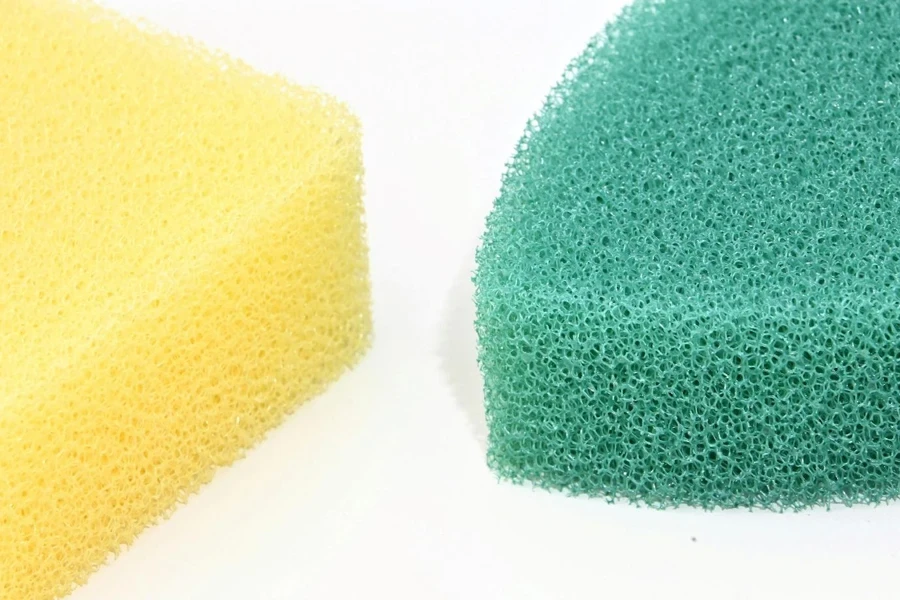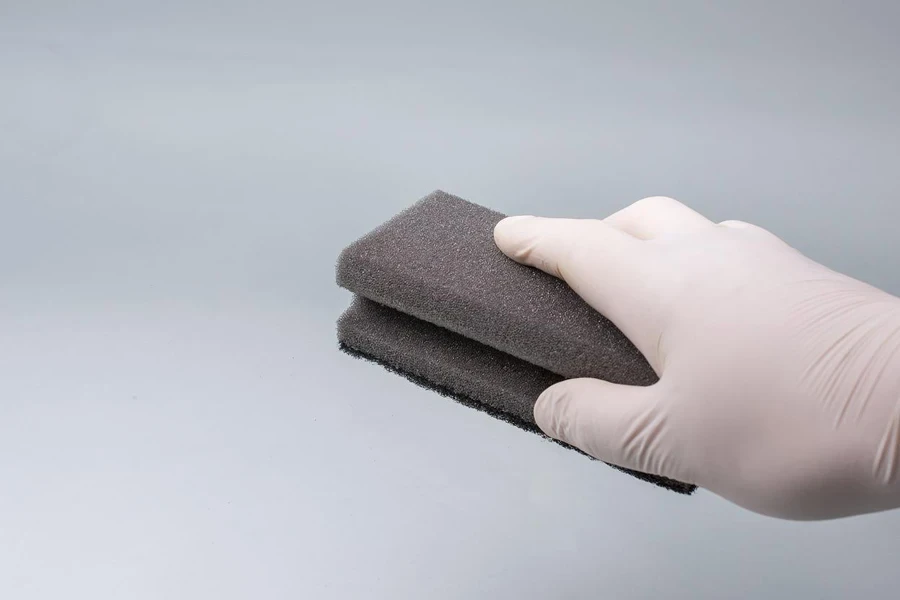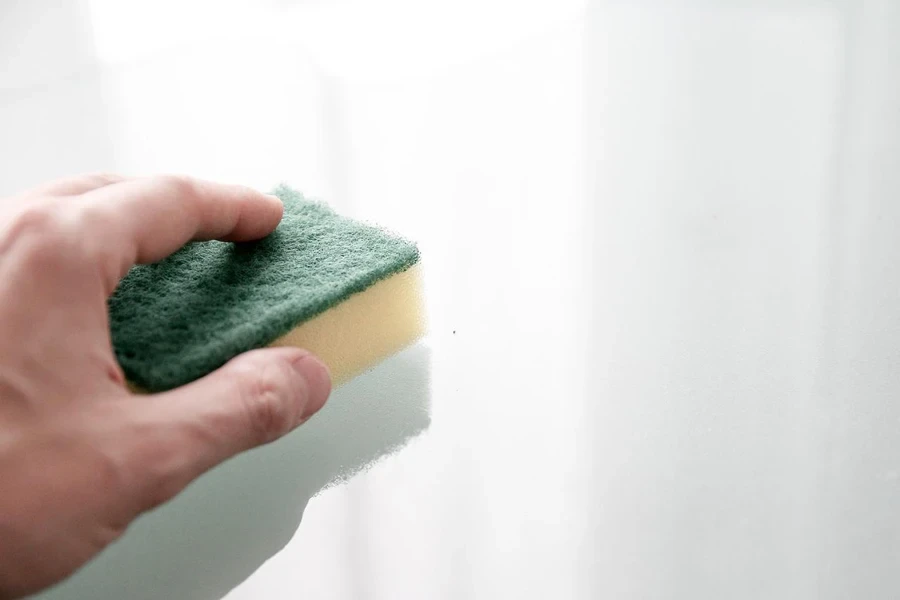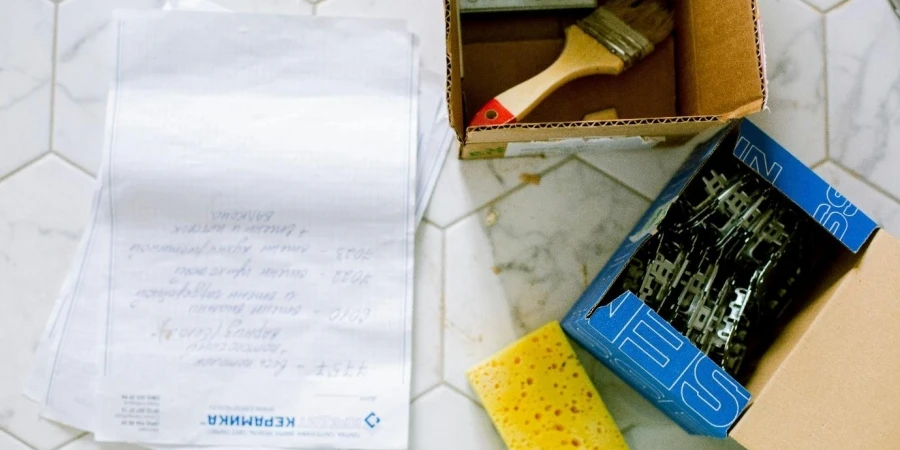Table of Contents
● Introduction
● Market overview
● Different types and their features
● Things to consider when selecting products
● Conclusion
Introduction

Proper cleaning requires using tools like sponges and scrubbing pads to maintain cleanliness effectively. The demand for these items is growing due to increased incomes and urban living trends. Knowing the types available and their unique qualities can significantly improve cleaning results. Key factors to consider when choosing the products are how well they work on different surfaces, their cleaning power, and how durable they are made. This guide offers information on current market trends and advice on selecting the best cleaning supplies.
Market overview

Market scale and growth
The sponges and scrubbing pads market is set to experience growth with an estimated compound annual growth rate of 4.83% from 2023 to 2028. This surge is anticipated to boost the market size by USD 1.57 billion within this timeframe. Factors fueling this encompass the uptick in disposable incomes, urbanization trends, and the burgeoning hospitality sector. Additionally, there is a rise in consumer expenditure on cleaning supplies and an expansion of the food service industry, which necessitates cleaning implements. Play significant roles in propelling market growth.
Market segmentation
The market is divided into two categories: residential and nonresidential users. In the residential sector, which holds a significant portion of the market share, households use items like scrubbing pads and cleaning cloths for everyday cleaning needs. The nonresidential sector consists of businesses such as restaurants, hotels, and catering companies that require durable and specific cleaning supplies. The increase in food establishments and hotels has notably driven demand in this sector.
Regional insights
The Asia Pacific (APAC) region is at the forefront of market growth, with a 35% contribution to the global economy expansion. It is fueled by factors like increased consumer spending in dining out and hospitality sectors as well as the trend towards urban living. Also, the rising popularity of eco-conscious products is driving consumer demand in the region. China, Japan, and India stand out as markets within APAC due to their sizable populations and growing disposable income levels.
Different types and their features

Galvanized scourers
Galvanized scrubbers are woven tightly with steel threads to create a highly abrasive pad. It is commonly sized at around 3.5 by 5 inches for handling challenging cleaning jobs effectively. They are perfect for tackling tough stains and grime like those in cast iron pans and stainless steel pots. Their rust-resistant steel fibers ensure long-lasting durability, even with regular use in tough cleaning conditions.
Nonabrasive sponge scourers have a two-layer structure comprising a soft polyurethane sponge side and a mild scrubbing surface opposite in design. These scourers typically measure 4 inches by 6 inches. They are ideal for tidying up fragile surfaces like glassware and nonstick cookware without causing any damage. The gentle scrubbing side is usually crafted from polyester fibers to ensure cleaning without leaving any scratches behind, making it a convenient choice for everyday cleaning of delicate objects.
Sponge scouring pads
Sponge scrubbing pads blend a cellulose sponge and a rough scouring pad in one handy package. They usually come in dimensions of 3. By 6. Inches. The size for tackling all sorts of cleaning jobs around the house. The sponge side is great for soaking up lots of water and soap thanks to its super absorbent nature, while the coarse side gets the job done when removing dirt and grime. That’s why these pads are what you need for keeping your kitchen spick and span, whether you’re wiping down your countertops or tackling those dishes after dinner.
Microfibre scouring pads
Microfiber scouring pads are crafted with a microfiber surface that’s gentle yet powerful in capturing dirt and grime effectively. These pads are commonly sized at 5 inches by 7 inches. They are perfect for maintaining the cleanliness of stainless steel appliances and glass surfaces. The microfiber composition. A combination of polyester and polyamide. It is renowned for its exceptional absorbency and capability to remove and retain particles without causing scratches, ensuring a thorough cleaning process. Additionally, these pads excel in buffing surfaces to a streak-glossy finish.
Stainless steel sponges
Stainless steel scrubbers are made of stainless steel strands, offering strong cleaning power for tough messes. These scrubbers are available in sizes, typically 3 inches across for standard ones and even up to 5 inches for larger options. They are designed to tackle demanding cleaning jobs like removing food leftovers and grease from grills, ovens, or commercial kitchen appliances. These scrubbers are built to last thanks to the stainless steel materials’ resistance to rust and corrosion. Maintain their effectiveness through prolonged use.
Things to consider when selecting products

Surface compatibility
Choosing the sponge or scrubber depends on what you’re cleaning off it. For example, nonstick pans need gentle scrubbers to keep them scratch-free! Stainless steel can handle steel scrubbers tough enough to remove grease and stuck on food without leaving marks behind. Microfiber pads are the best option for glass surfaces. Their delicate fibers clean well without streaks or scratches. Every surface has its ideal level of roughness needed to clean it effectively without causing harm.
Cleaning intensity
The level of dirtiness of what you’re cleaning should determine whether to use a sponge or a scrubbing pad. Tasks like wiping surfaces or gently cleaning fragile glass items without causing damage are better handled with soft sponges from gentle materials like polyurethane or polyester. Tougher jobs like scrubbing pots and pans with residues that won’t budge can easily be done using materials like galvanized steel fibers or sturdy nylon for effective cleaning. A galvanized scrubber with steel strands works well for stubborn stains and baked-on residue; meanwhile, a medium-duty nylon pad is perfect for everyday cleaning tasks without causing too much wear and tear.
Material and durability
The durability and effectiveness of a sponge or scrubbing pad depend greatly on what they’re made of. Scouring pads made from nylon fibers are known for their strength and flexibility. They can endure use without wearing out. Galvanized steel scrubbers crafted from steel fibers are tough against abrasions and last long making them perfect for tough cleaning jobs. Microfiber pads that mix polyester and polyamide offer absorbency and trap dirt effectively while being gentle when cleaning surfaces. Select materials based on how heavily they will be used to ensure they are durable enough to meet the requirements.
Eco-friendliness
Friendly cleaning tools like eco-conscious individuals are gaining more significance among consumers who care about the environment and nature conservation efforts. Compostable alternatives made from wood pulp or natural cotton fibers break down naturally. Have a minimal impact on the environment. These sustainable materials are crafted to deliver cleaning results while minimizing waste and pollution. For instance, a sponge derived from wood pulp provides absorbency and breaks down easily, serving as a responsible choice for various cleaning needs. By selecting eco options, you can diminish your carbon footprint and support sustainable cleaning practices.
Maintenance and hygiene
Keeping your kitchen tools like sponges and scourers in good condition makes them last longer and stay clean for use every time. Rinse the sponge with running water to remove leftover dirt or soap residue. A good cleaning tip would be to soak the sponge in warm water with a gentle detergent to remove stubborn grime. Ensure to air dry the sponge after cleaning to avoid bacterial buildup in damp environments. Inspect your scourers regularly for signs of wear, like fraying or rust, to ensure they are effective and safe. Implementing these maintenance routines not only prolongs the lifespan of cleaning tools but also upholds a clean and hygienic environment for cleaning purposes.
Conclusion

Selecting ideal cleaning sponges and pads can improve cleaning efficiency and effectiveness while catering to different surfaces and specific needs. Maintaining these tools ensures durability and contributes to hygiene standards. They are essential for home and business cleaning activities. Careful consideration of material quality, longevity, and environmental impact can improve cleaning outcomes and promote eco-friendly practices.




